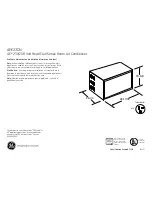
P5417009-rev.6
69
NOTICE
Do not apply excessive force to the stop valve after fully opening. Otherwise, the stop valve will blow out due
to refrigerant pressure. At the test run, fully open the stop valve. Otherwise, these devices will be damaged. (It
is closed before shipment.)
Caution for Opening Stop Valve
1. Do not apply an excessive force after fully opening the stop valve (Tightening Torque: < 3.7 ft·lbs
(5.0 N·m)). (This valve does not have a hard stop when opening, and allows for the complete removal of
the valve stem.)
2. Securely tighten the caps according to the torque specs (Section 8.1-(2)-(d) after each stop valve is
opened.
Hexagonal Wrench Size [inch (mm)]
Model
Gas Valve
Liquid Valve
72 - 144
3/8
(10)
3/16
(4)
168, 192
3/16
(5)
8.3 Charging Work
(1) An additional refrigerant charge is required according to total piping length. Refer to Table 8.1.
(2) After vacuum pumping work, check that the high/low pressure gas valve, and liquid stop valve are fully
closed.
Charge the additional refrigerant from the access port of liquid stop valve (acceptable error must be
within 1.1 lbs (0.5 kg)).
(3) After refrigerant has been charged, fully open the liquid stop valve and gas stop valves.
Gas remaining at the O-ring or screw component may emit a hissing sound when removing the stop
valve cap. However, this is not leaking gas.
(4) If it proves impossible to dispense the specified (charged) quantity of refrigerant, follow the procedure
below.
(a) Fully open the stop valve at the gas line side (both stop valves of high/low pressure and low
pressure side).
O-ring
(Rubber)
Stop Valve
Counterclockwise...Open
Clockwise...............Close
Closed before shipment
Refrigerant Pressure
Cap
Hexagonal Wrench
(To open or close stop valve)
Access Port
(Only the charging hose for
R410A can be connected.)














































